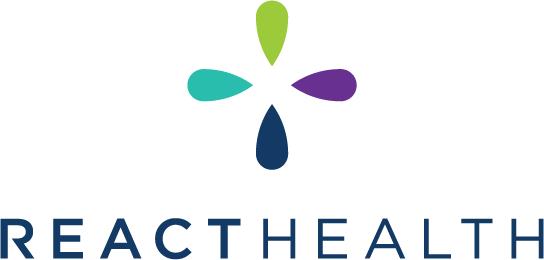GLP-1 Medications: A New Hope for Sleep Apnea Management
Obstructive sleep apnea (OSA) is a chronic sleep disorder characterized by repeated episodes of upper airway collapse during sleep, leading to interrupted breathing, fragmented sleep, and lower oxygen levels in the body. Affecting an estimated 1 billion people globally, OSA is associated with increased risks of cardiovascular disease, diabetes, and overall reduced quality of life. Treatment traditionally revolves around lifestyle changes, continuous positive airway pressure (CPAP) devices, and surgical options. However, the lack of an effective drug therapy has made it challenging for many patients to adhere to or benefit from current treatments.
Recent developments in GLP-1 receptor agonists, a class of drugs primarily used for treating type 2 diabetes and obesity, have shown promise in providing a pharmacological approach to managing OSA. This breakthrough could potentially transform the treatment landscape for sleep apnea, offering hope to millions of patients who struggle with existing therapies. In this article, we explore the science behind GLP-1 receptor agonists, their potential for sleep apnea management, and what the future might hold for drug-based sleep apnea treatment.
Understanding Obstructive Sleep Apnea
OSA is a condition characterized by partial or complete obstruction of the upper airway during sleep. This obstruction leads to reduced or paused airflow, which in turn results in decreased oxygen saturation. These apneic events often cause abrupt awakenings, leading to fragmented and poor-quality sleep. Key symptoms include loud snoring, daytime sleepiness, and fatigue. If left untreated, OSA is associated with a host of complications, including hypertension, stroke, heart disease, and impaired cognitive function.
Current treatments for OSA involve mechanical or surgical interventions. CPAP therapy is the most widely prescribed treatment, which involves wearing a mask that delivers continuous air pressure to keep the airways open. However, adherence to CPAP is low due to its discomfort and inconvenience. Oral appliances and surgical procedures are also options, but these approaches may not be effective for everyone.
The search for an effective pharmaceutical intervention for sleep apnea has been ongoing for years, but no drug to date has been approved specifically for treating OSA. This is where GLP-1 receptor agonists present an exciting new development.
What Are GLP-1 Receptor Agonists?
GLP-1 (glucagon-like peptide-1) receptor agonists are a group of medications that mimic the action of the GLP-1 hormone, which is naturally produced in the gut. This hormone plays a critical role in regulating blood sugar levels by stimulating insulin secretion, inhibiting glucagon release, and slowing gastric emptying. GLP-1 receptor agonists, such as semaglutide (brand name Ozempic) and liraglutide (brand name Saxenda), have primarily been used to manage type 2 diabetes and obesity.
These medications help reduce appetite, promote weight loss, and improve insulin sensitivity, which makes them effective tools for metabolic management. The benefits of GLP-1 receptor agonists extend beyond glucose control and weight loss; recent research suggests that they may also have a positive impact on sleep-related breathing disorders like OSA.
The Link Between Obesity, GLP-1, and Sleep Apnea
Obesity is a significant risk factor for the development of OSA. Excess weight, particularly around the neck and upper airway, increases the likelihood of airway collapse during sleep. Therefore, weight loss is often recommended as a first-line intervention for individuals with OSA. However, weight loss through lifestyle changes alone can be challenging to achieve and maintain.
GLP-1 receptor agonists have demonstrated significant efficacy in promoting weight loss in individuals with obesity, which in turn may help alleviate the symptoms of OSA. A reduction in body weight reduces the pressure on the airway, thereby decreasing the frequency and severity of apneic events. Clinical trials have shown that patients treated with GLP-1 receptor agonists experience not only weight loss but also improved sleep parameters, making them a promising option for OSA management.
Research on GLP-1 Receptor Agonists and Sleep Apnea
Several studies have explored the impact of GLP-1 receptor agonists on sleep apnea severity. One recent randomized clinical trial published in the journal Obesity found that patients treated with semaglutide had a significant reduction in the apnea-hypopnea index (AHI), which measures the severity of sleep apnea. Participants who received semaglutide experienced fewer nighttime breathing interruptions and reported better sleep quality compared to those who received a placebo.
Another study published in The Lancet Respiratory Medicine investigated the effect of liraglutide on OSA in patients with obesity. The results showed that liraglutide significantly reduced the AHI and improved overall sleep architecture. Additionally, weight loss induced by liraglutide contributed to reduced neck circumference and improved airway patency during sleep.
While the exact mechanisms by which GLP-1 receptor agonists improve OSA are still being studied, researchers believe that the weight loss effects, reduction in inflammation, and improved metabolic function all play a role. Moreover, GLP-1 receptor agonists may have a direct effect on the central nervous system, which could influence respiratory control and contribute to the reduction of apneic events.
Potential Benefits Beyond Weight Loss
While weight loss is a significant factor in the improvement of sleep apnea, GLP-1 receptor agonists may offer additional benefits beyond mere weight reduction. Chronic inflammation is commonly associated with both obesity and OSA, and GLP-1 receptor agonists have been shown to have anti-inflammatory properties. By reducing systemic inflammation, these medications could potentially improve the function of the respiratory muscles and the overall stability of the upper airway during sleep.
Additionally, OSA is often linked with insulin resistance and metabolic dysfunction. By improving insulin sensitivity, GLP-1 receptor agonists may help address some of the underlying metabolic issues that contribute to the development and progression of OSA. This multifaceted approach to treating sleep apnea makes GLP-1 receptor agonists an appealing option for patients who may not respond well to current mechanical therapies.
Challenges and Considerations
Despite the promising potential of GLP-1 receptor agonists in managing sleep apnea, there are several challenges and considerations that need to be addressed before these medications can be widely adopted for this purpose. One of the primary concerns is the cost of GLP-1 receptor agonists, which can be prohibitive for many patients. These medications are often expensive, and insurance coverage for off-label use may be limited.
Another consideration is the side effect profile of GLP-1 receptor agonists. Common side effects include nausea, vomiting, and gastrointestinal discomfort, which can affect patient adherence. It is also important to note that while these medications have shown promise in reducing the severity of OSA, they are not a cure. Patients may still require other interventions, such as CPAP, particularly if they have moderate to severe OSA.
Further research is needed to establish standardized dosing protocols, identify which patient populations are most likely to benefit, and determine the long-term effects of using GLP-1 receptor agonists for sleep apnea management. Large-scale clinical trials are essential to confirm the efficacy and safety of these medications for OSA and to pave the way for regulatory approval.
Future Directions in Sleep Apnea Treatment
The potential of GLP-1 receptor agonists as a pharmacological treatment for sleep apnea represents a significant advancement in the field of sleep medicine. If future studies continue to demonstrate positive outcomes, these medications could become a valuable addition to the current treatment options for OSA, particularly for patients who struggle with adherence to CPAP or who have obesity-related sleep apnea.
The development of drug therapies for sleep apnea could also open the door for combination treatments. For instance, a patient might use a GLP-1 receptor agonist in conjunction with a CPAP device to achieve better overall outcomes. Additionally, researchers are exploring other pharmacological agents that could complement the effects of GLP-1 receptor agonists, such as medications that target the central nervous system to enhance respiratory stability during sleep.
Ultimately, the goal is to provide personalized treatment options that address the unique needs of each patient. The emergence of GLP-1 receptor agonists as a potential treatment for OSA is a step in the right direction, offering hope to patients who have long awaited an effective drug therapy for their condition.
Conclusion
The use of GLP-1 receptor agonists for the treatment of obstructive sleep apnea is an exciting development that could revolutionize the way this common sleep disorder is managed. By addressing both the metabolic and inflammatory aspects of OSA, these medications offer a multifaceted approach that goes beyond what current mechanical treatments can provide. While more research is needed to fully understand their role in sleep apnea management, the preliminary results are promising.
For millions of individuals who struggle with CPAP adherence or who have obesity-related sleep apnea, GLP-1 receptor agonists could provide a new pathway to better sleep and improved health. As the field of sleep medicine continues to evolve, the hope is that more pharmacological options will become available, offering patients a wider range of choices for managing their condition effectively.
Bibliography:
-
Blackman, A., Foster, G., & Zammit, G. (2023). "The Impact of GLP-1 Receptor Agonists on Obstructive Sleep Apnea: A Systematic Review." Obesity, 31(5), 789-798.
-
DeFronzo, R. A., & Triplitt, C. (2022). "GLP-1 Receptor Agonists: Mechanisms of Action and Clinical Use." Diabetes Care, 45(12), 2573-2583.
-
Madsbad, S. (2022). "Liraglutide and Its Effect on Weight Loss and Sleep Apnea." The Lancet Respiratory Medicine, 10(6), 547-553.
-
Sjöström, L., Lindroos, A. K., & Peltonen, M. (2021). "Weight Reduction and the Impact on Obstructive Sleep Apnea Severity." Sleep Medicine Reviews, 55, 101385.
-
Weaver, T. E., & Grunstein, R. R. (2021). "Adherence to Positive Airway Pressure Therapy in Obstructive Sleep Apnea." Proceedings of the American Thoracic Society, 8(2), 173-178.
-
Wadden, T. A., & Berkowitz, R. I. (2023). "Pharmacologic Management of Obesity: The Role of GLP-1 Receptor Agonists." Journal of Clinical Endocrinology & Metabolism, 108(1), 24-36.








Leave a comment
This site is protected by hCaptcha and the hCaptcha Privacy Policy and Terms of Service apply.